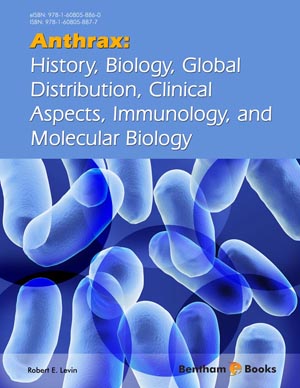Abstract
Both the lethal toxin (LT) and edema toxin (ET) of Bacillus anthracis are binary toxins and each for activity, must be bound to the protective antigen (PA) to enter and exert toxicity on eukaryotic cells. Eukaryotic cells harbor specific PA membrane receptors. Proteolytic activation of PA results in the formation of ring shaped heptamers which form ion-conductive pores in cell membranes with receptors. Each prepore binds a total of three EF and/or LF peptides competitively, and after endocytosis and transport of the complex to an acidic, vesicular compartment, it undergoes membrane insertion and mediates translocation of EF/LF to the macrophage cytosol where it exerts its cytotoxic effect. The transmembrane pore houses an aromatic iris or disk that creates a structural bottleneck in the pore, requiring that the LF and EF peptides unfold in order to be translocated into the cellular cytosol. This restricted site has been termed the “Φ-clamp” or phenylalanine clamp. The Φ-clamp or hydrophobic ratchet is thought to grasp hydrophobic sequences as they unfold from the molten peptide globule to direct the translocating chain through the channel. Treatment of macrophages with LT has been found to influence the expression of 103 genes. LT is proteolytic towards MAPKKs and thereby disrupts intracellular signaling.
Keywords: Lethal toxin, LT, edema toxin, ET, transmembrane pore, protective antigen, PA, anthrax toxin receptor, ATR, heptamers, ratchet, MAP kinase kinases, MAPKKs, Macrophages, oxidative burst, apoptosis, autophagy, proteasome activity, cyclic AMP, cAMP.






















